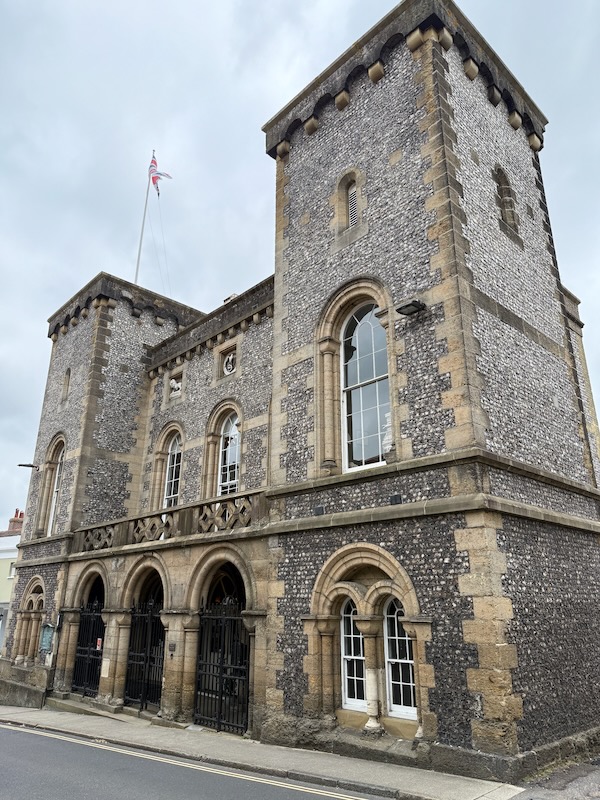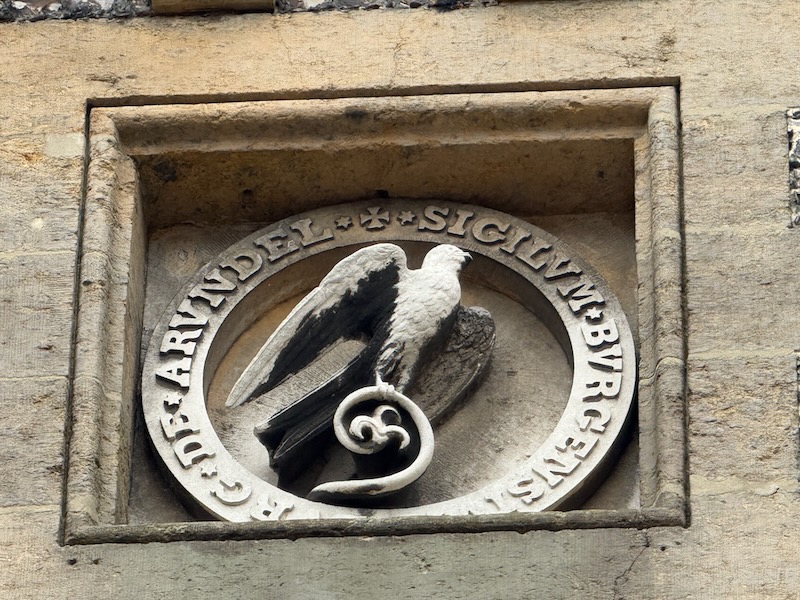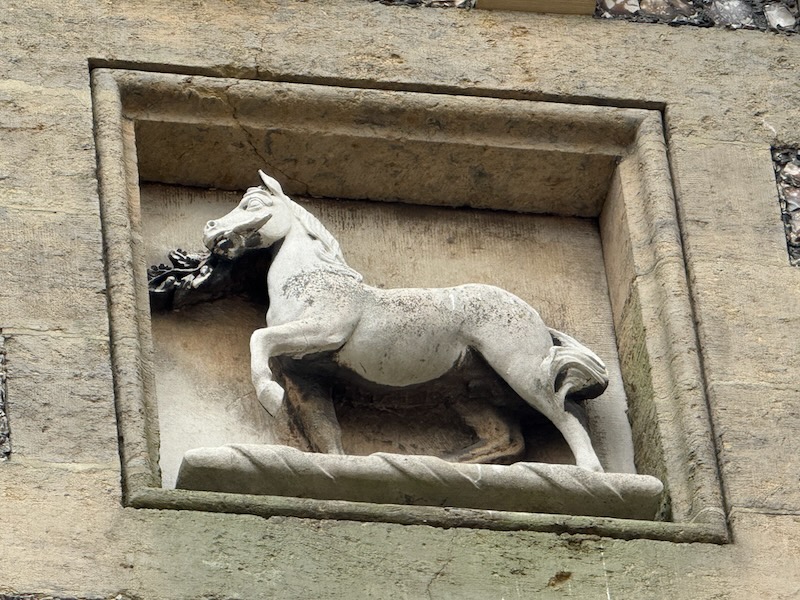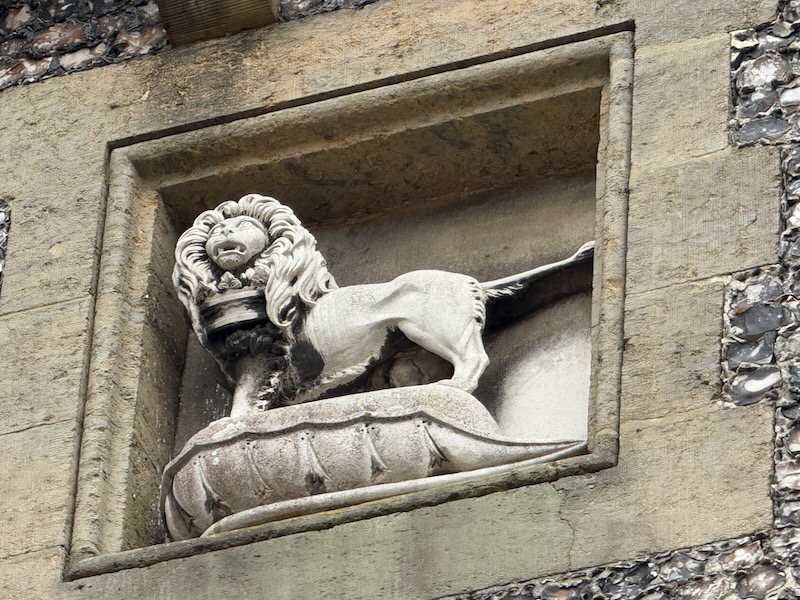Our Blog - August 2025 - England trip - Arundel
Arundel is another "market town", which means that in the Middle Ages, the town obtained the "right" to host a regular market. There is a really nice little downtown area and a very large castle. This blog will cover the town and the castle will have its own blog. The town is quite old, since it was recorded in the Domesday Book of 1086. The name comes from the Old French word arondelle, meaning 'swallow', and swallows appear on the town's arms.
We planned the visit on a market day and there were a couple "muscle cars" on display ... a Mustang (which didn't really impress me much) and a McLaren.
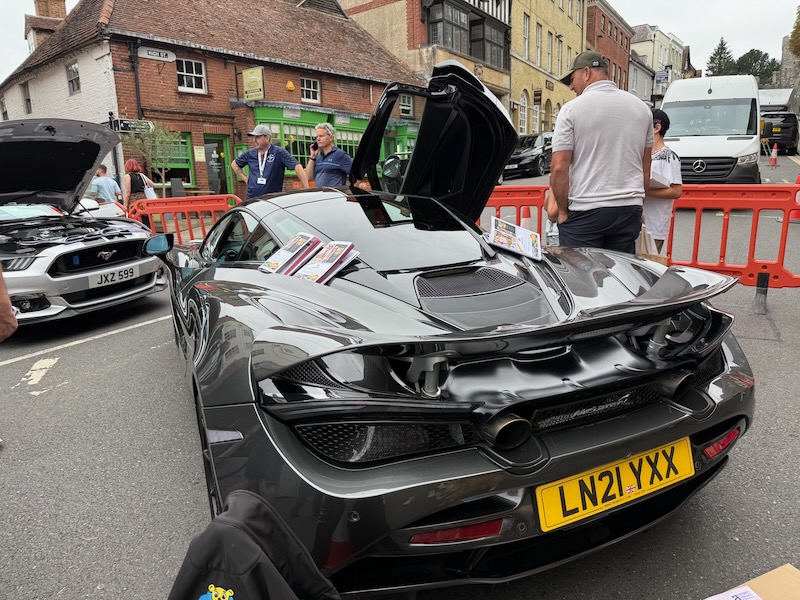
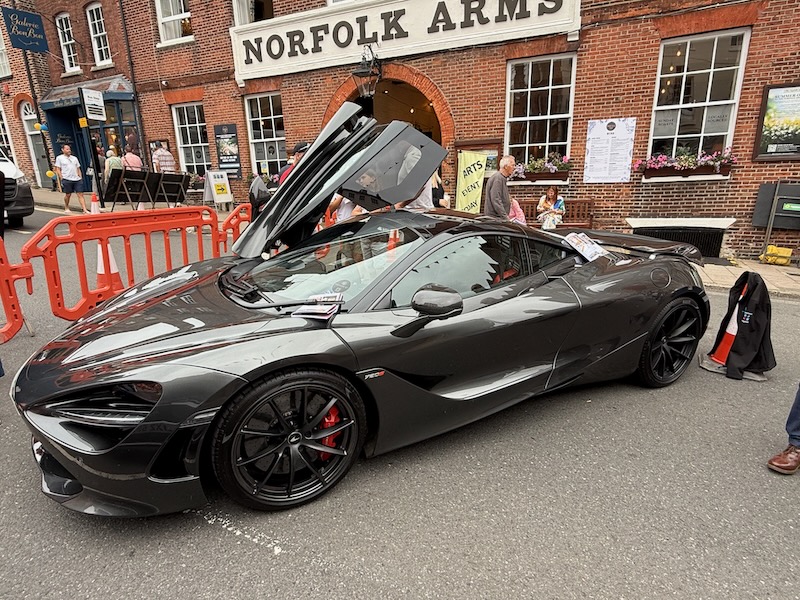
We walked by the back gate of the castle, which is an exit-only now. Pretty impressive walls and gates. We didn't visit the castle during this visit, as dogs aren't allowed, but you can see all the details in Arundel Castle blog.
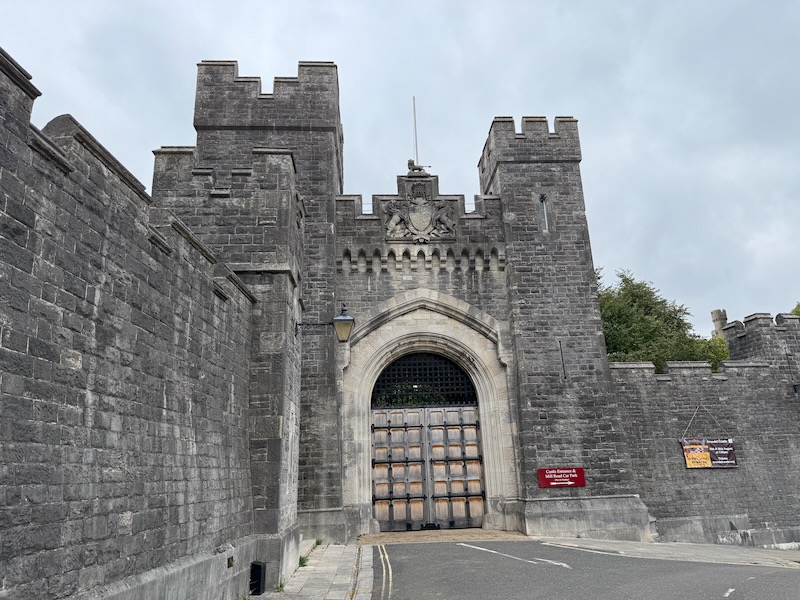
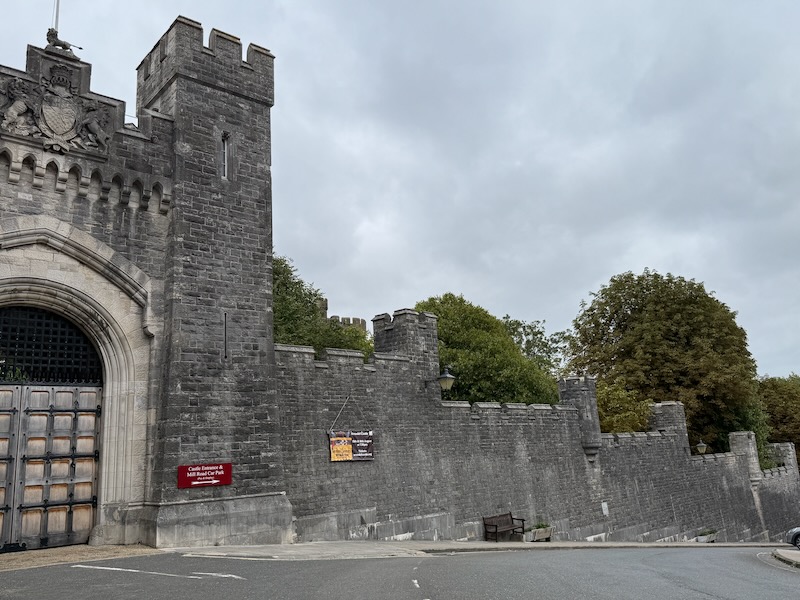
Today, this is the Arundel Priory Theater, but originally it was the Arundel Priory. Built in 1380, the church flourished until the English Civil War and then it lay in ruins for 3 centuries. The 11th Duke of Norfolk decided to restore what was left, repairing the existing buildings. The Oratory is now the Playhouse, and the other buildings are now a home for the elderly.
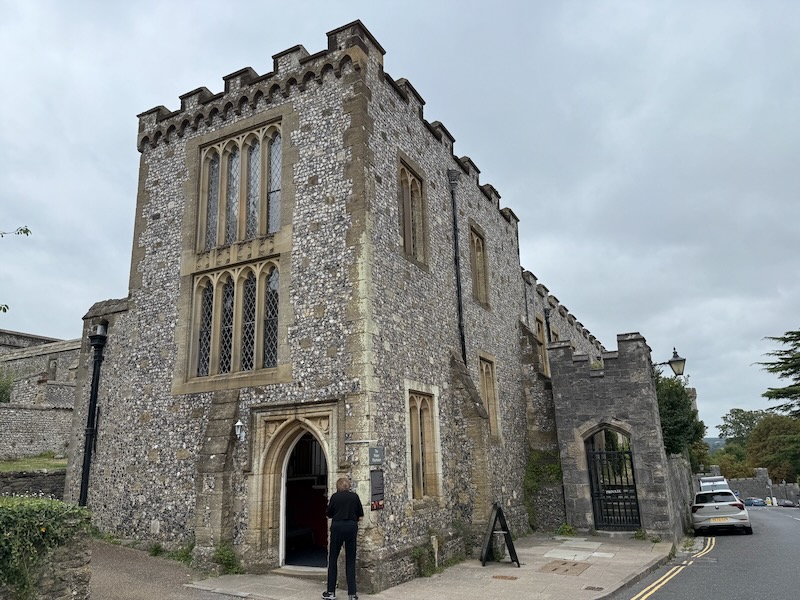
You will see 2 churches in this blog, the first being St Nicholas' Church. There were at least 2 earlier churches on or near the site of the present one (some fragments can be seen today). The current building was started around 1380 using in flint and local stone. We saw quite a few churches built using flint, which is black/grey and shiny.

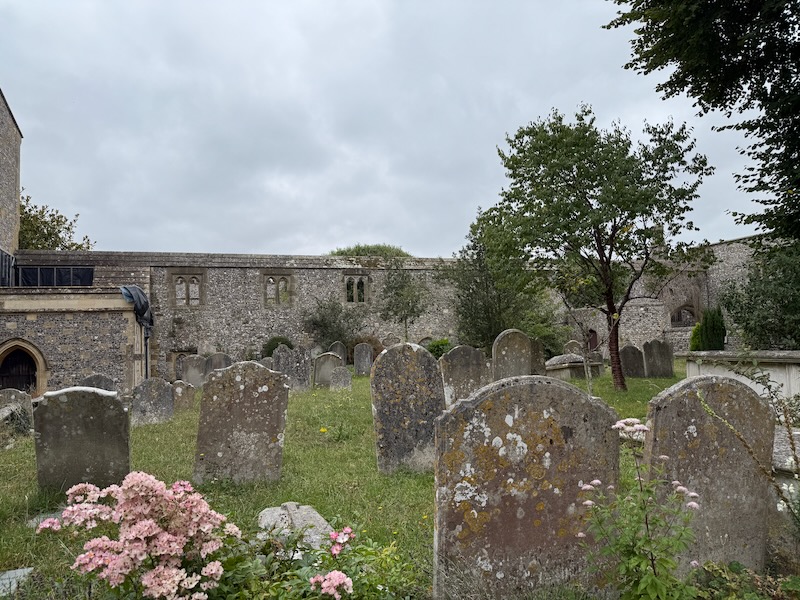

I don't have tons of information on everything in the church, but the octagonal fond, made of Sussex marble, dates from around 1380. The elaborate canopied stone pulpit, thought to be slightly later in date, was designed by one of the architects of Canterbury Cathedral. There is also an unusually large Royal Coat of Arms and a colorful organ.
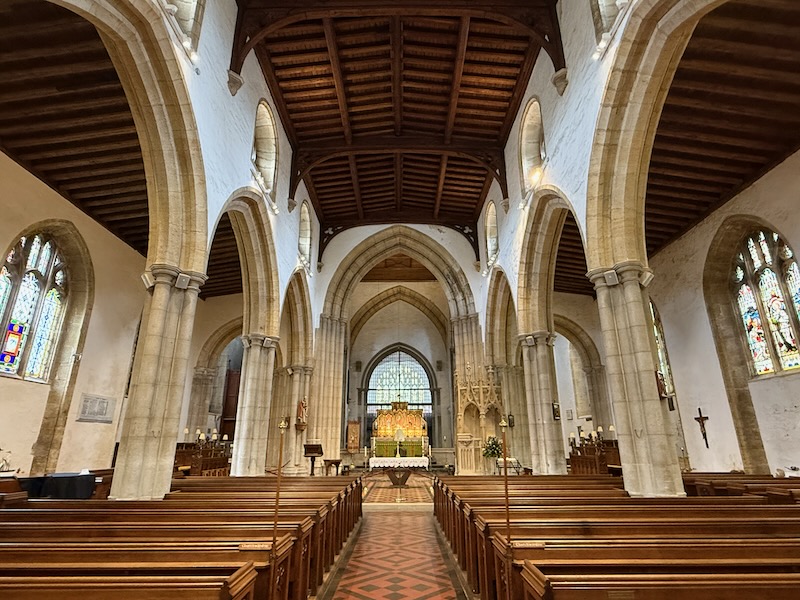
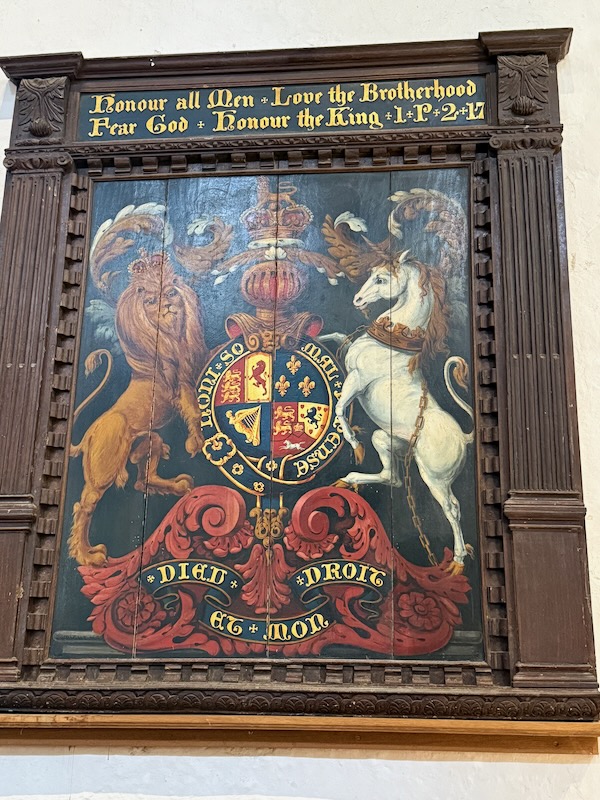
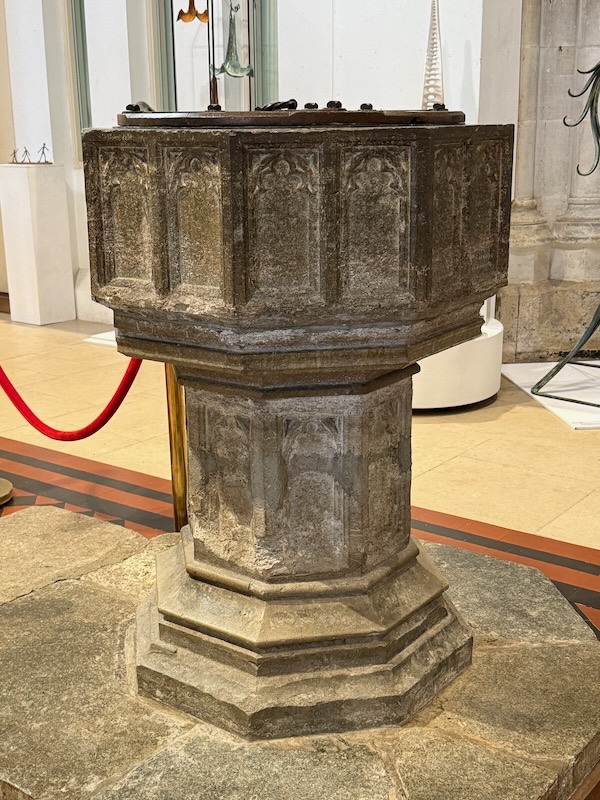
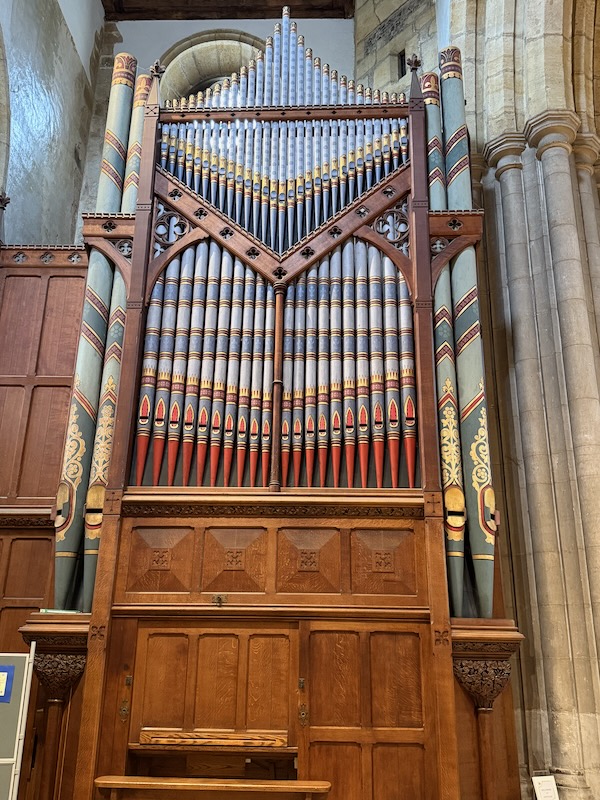
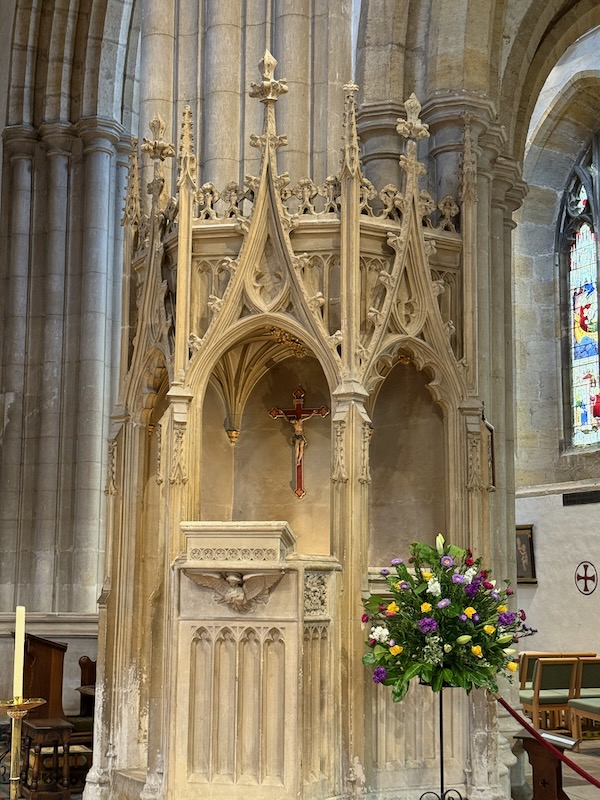

This is 1 of only 3 medieval English choir books to have survived to now. It was compiled and written in about 1520. Well ... this is a copy of the original, which is kept in the Lambeth Palace Library in London.
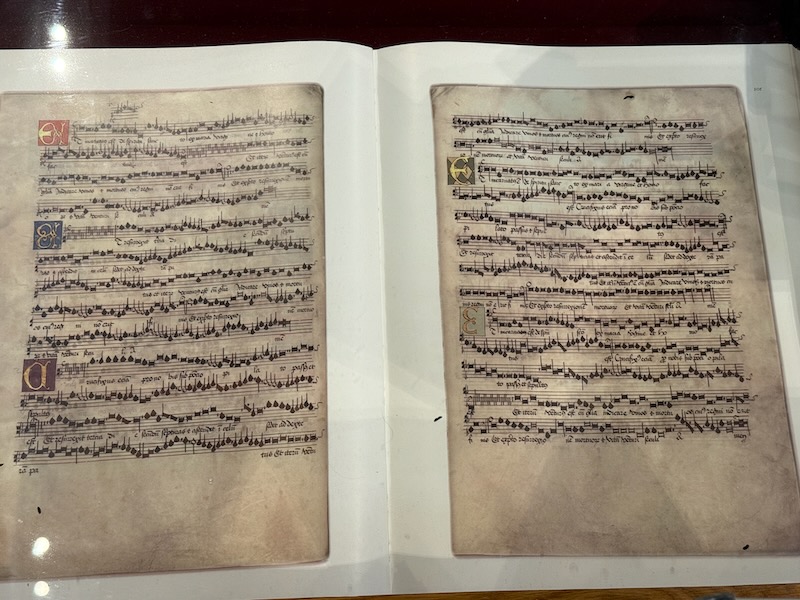
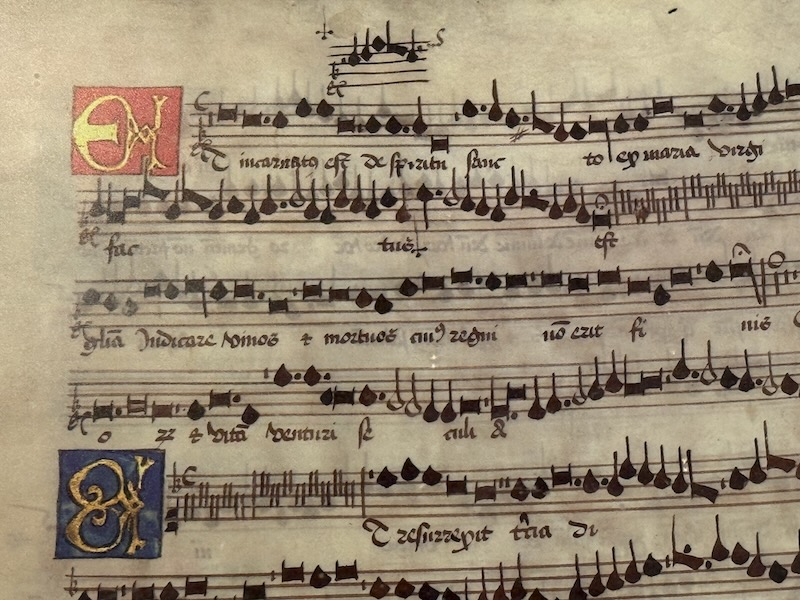
And just a couple stained-glass windows that were done in 1878,
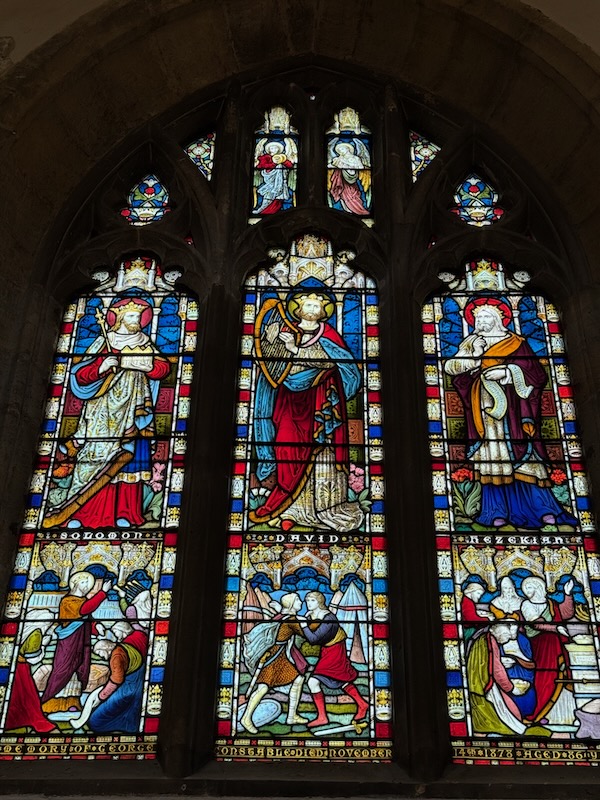
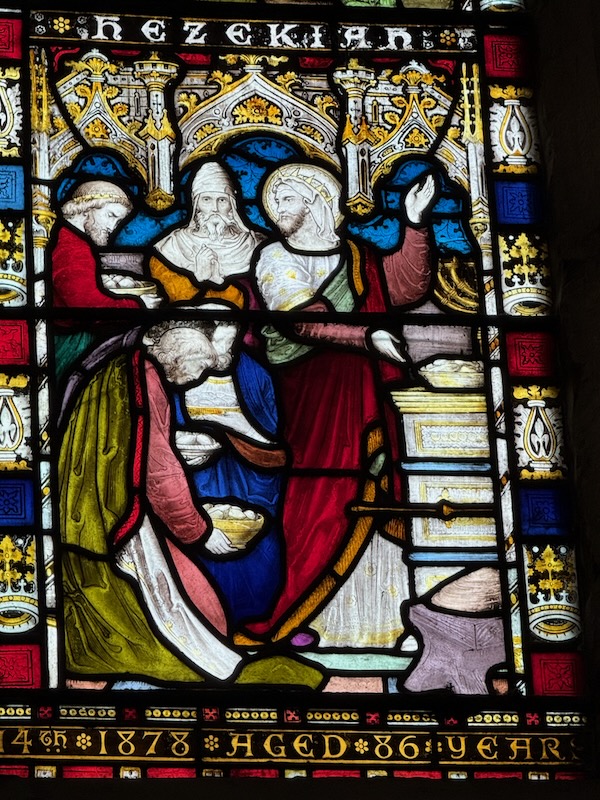
You can't really see much here, so you will have to take my word for it. They are faded wall paintings depicting the 7 deadly sins and the 7 works of mercy dating back to the the 14th century..
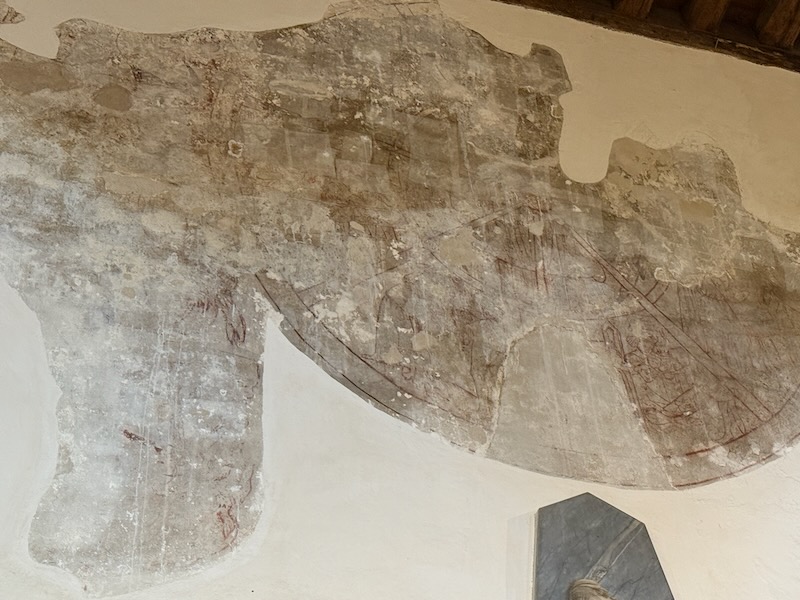
You will see more of the Fitzalan Chapel in the Castle blog, but we could only peek into it from the Church. It is actually the former chancel, which was walled off and can now at least be seen through a wrought iron grille. Access is included with the paying ticket for the castle).
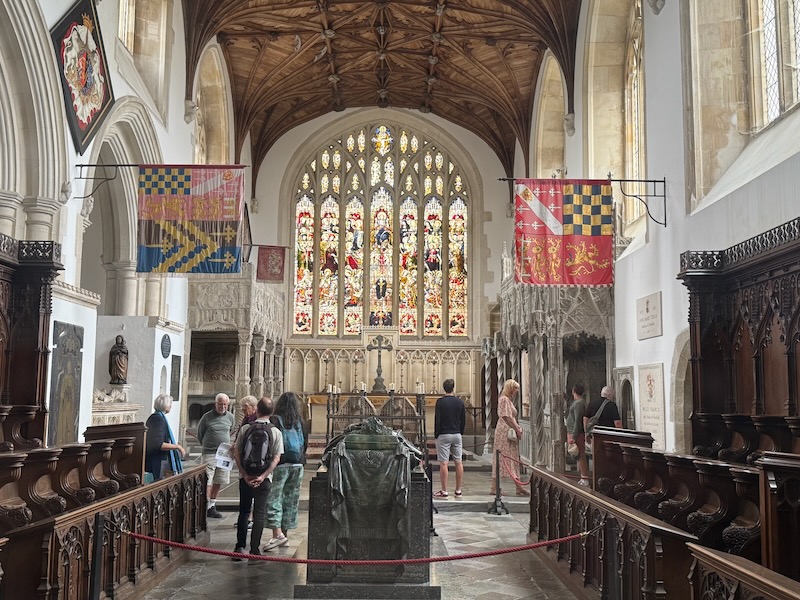
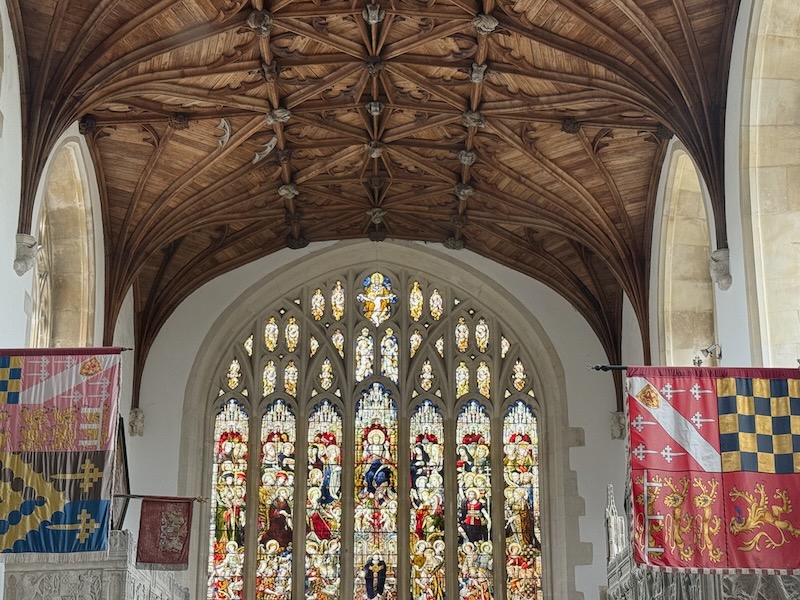
The Cathedral Church of Our Lady & St Philip Howard, or just the Arundel Cathedral. It is quite large and even from the outside, you can see the Gothic architecture. It was built in 1868 in Gothic Revival style, so a little bit of Flamboyant at the tops but not too overly flamboyant. Above the entrance are a bunch of lovely statues. These other 2 faces is a bit bizarre ... I'm not exactly sure who they are but they don't seem very happy.
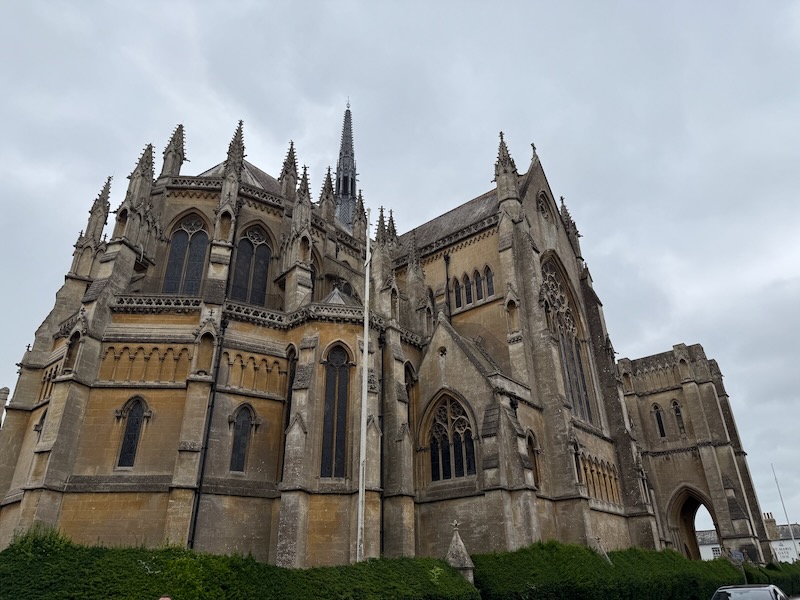

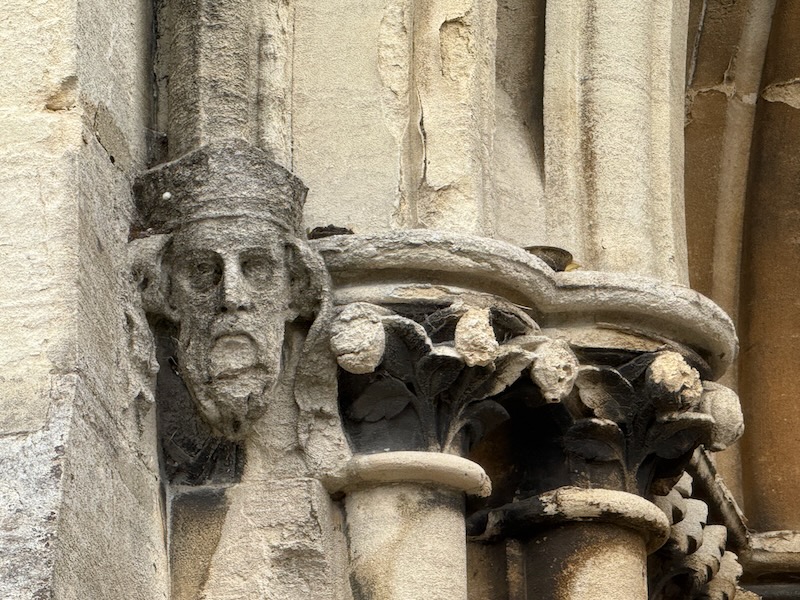
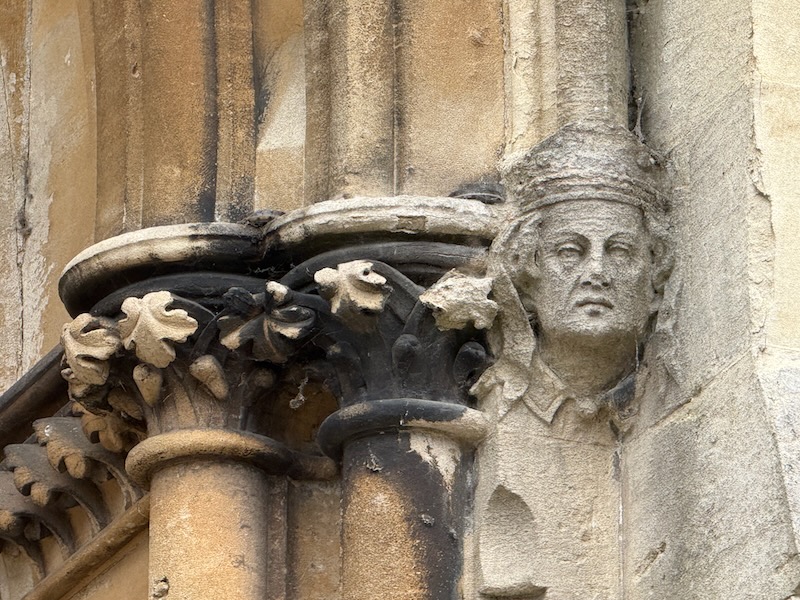
Looking down the nave, you can see the French Gothic architecture with an immediate impression of height, light, and space.
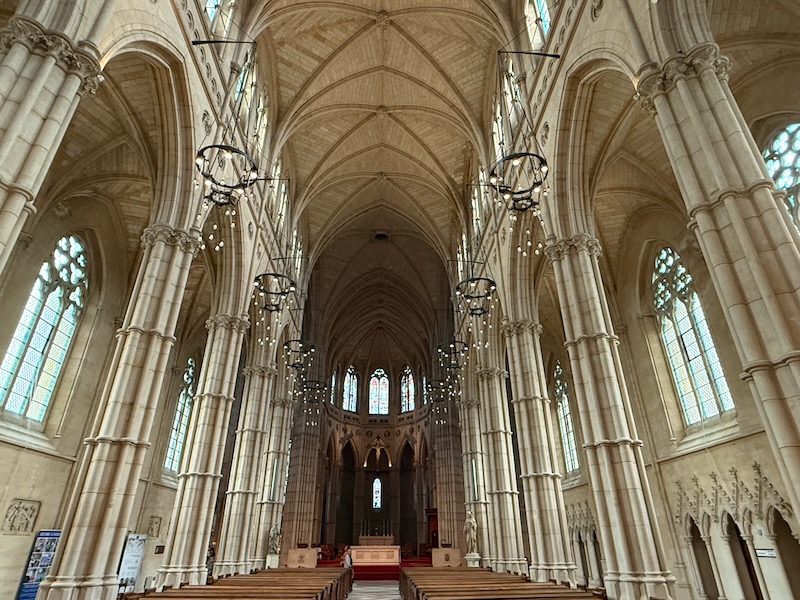
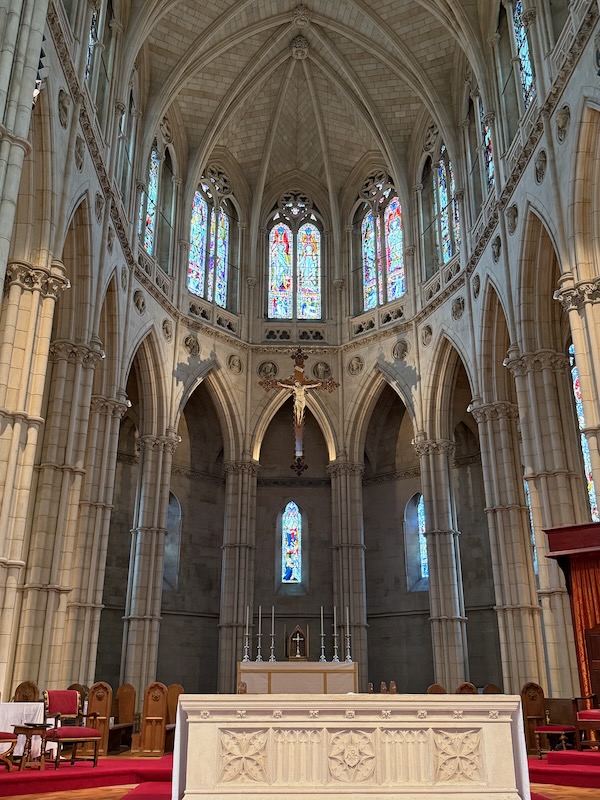
The church is dedicated to St. Philip Neri, a 16th-century Italian saint. Supposedly he had a playful sense of humor, which was a bit different than most priests and saints.
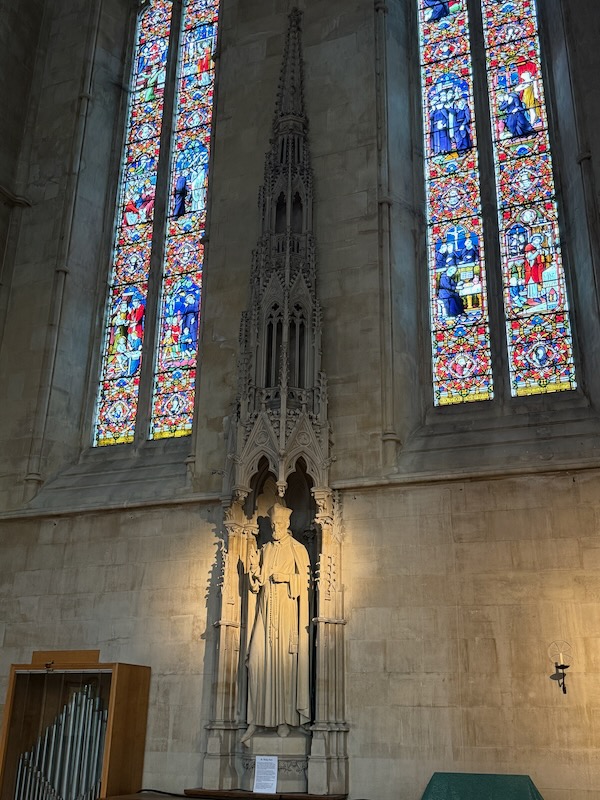
A couple of stained-glass windows and a very colorful organ. We also saw a colorful organ in the previous church. In the centre of the great window is the Blessed Virgin with the Holy Child; around her, angels bearing incense. In the outer circle are the 15 Mysteries of the Rosary. The organ was originally built for a different church and moved here in 1875.
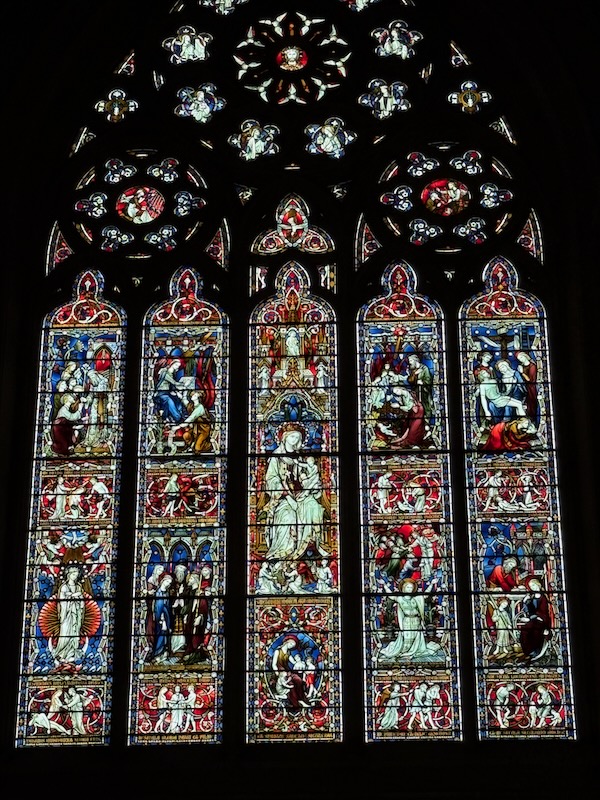
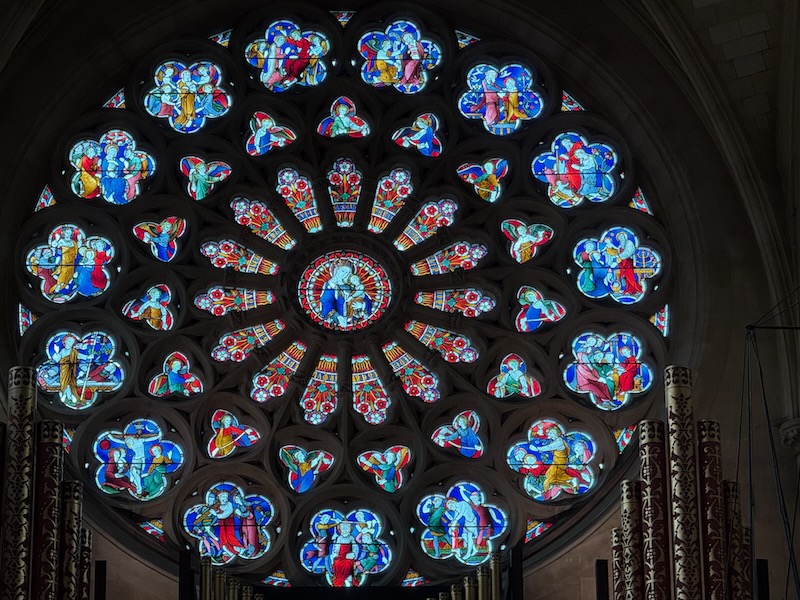
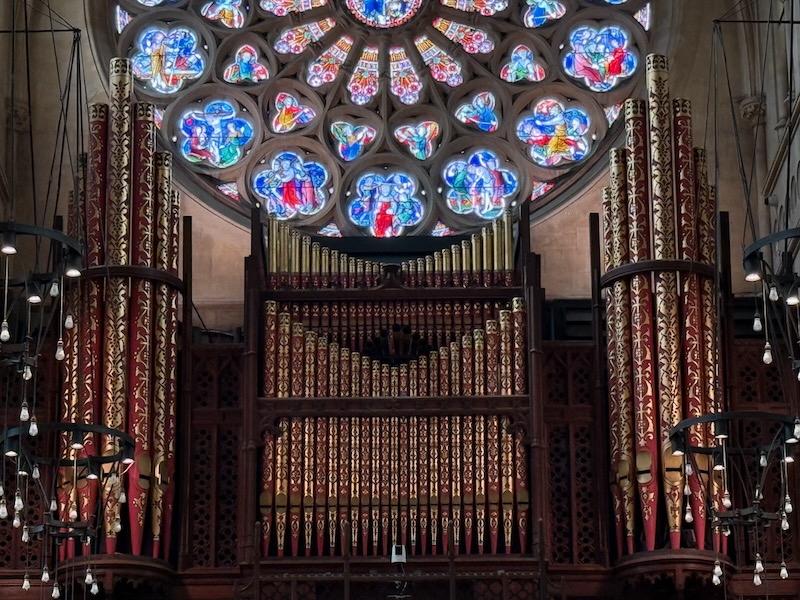
The altarpiece in St Wilfrid's Chapel shows Christ rising from the tomb with the Archangel Michael (killing the dragon) and St. George, both patrons of soldiers.

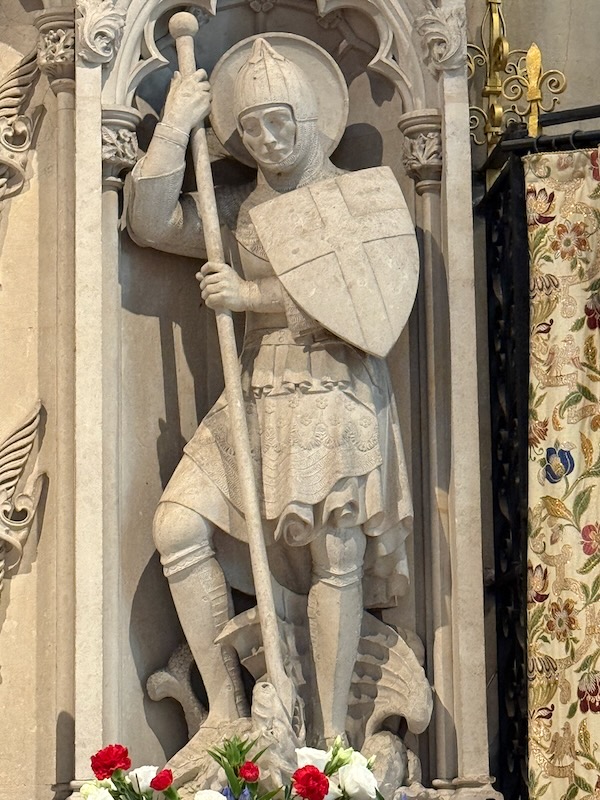
Another stone and flint building, this is the Town Council building, built in 1838. It is very symmetrical, with 2 towers on either sides. There are 3 niches at the very top of the central section: one is a horse, one is a lion, and one looks like a bird (I don't know the significance of these).
